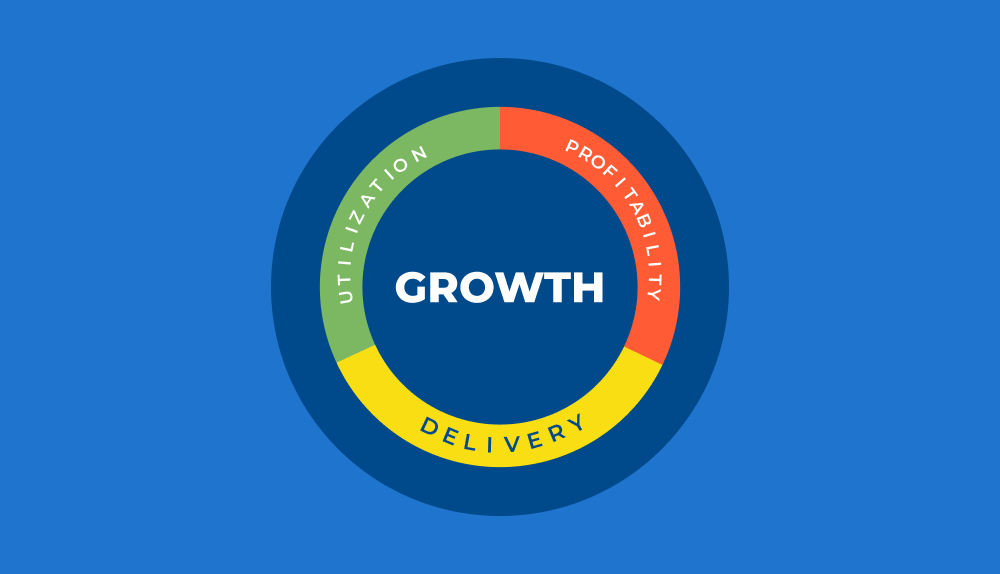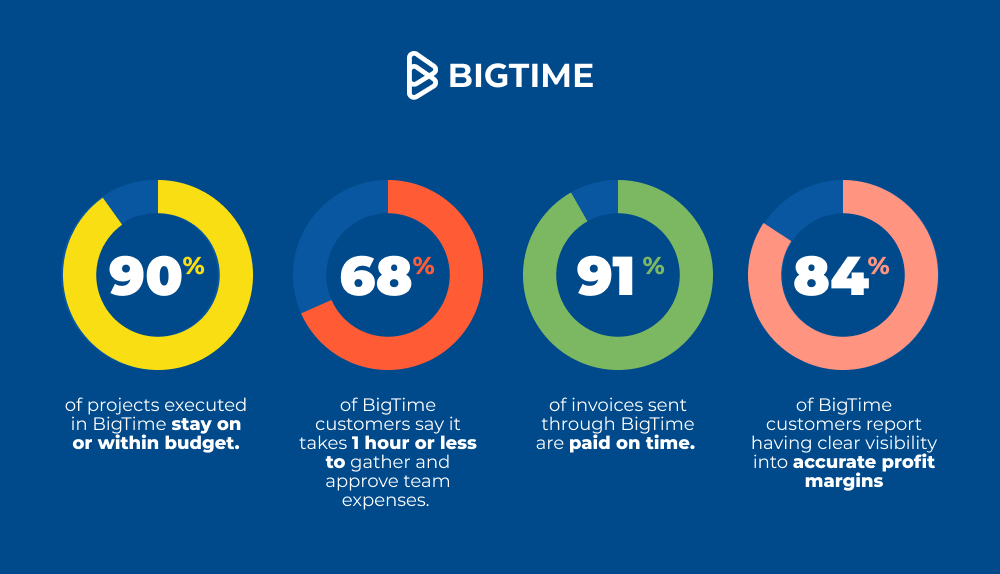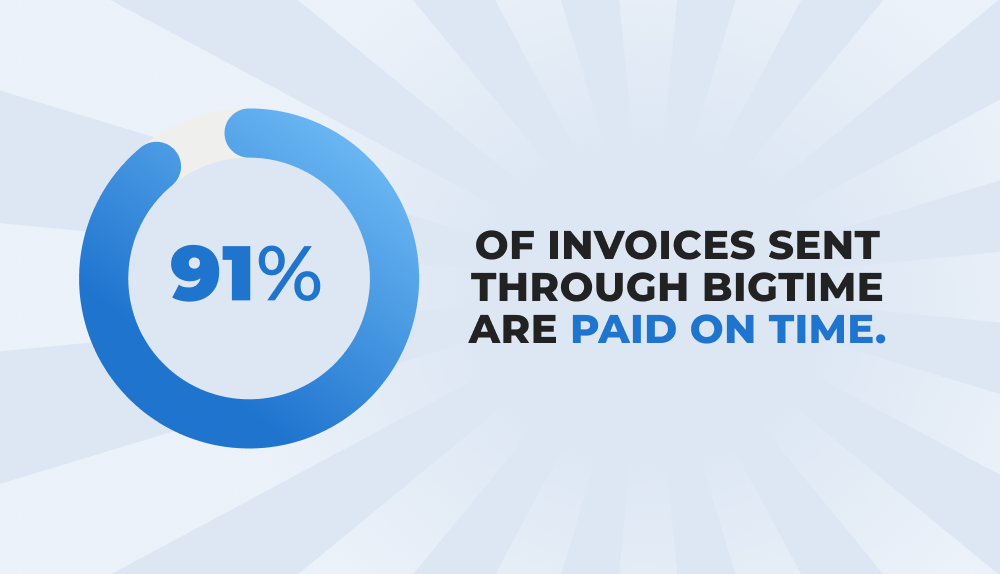Benchmarks set the standard for measuring your progress and keep your focus on continually improving performance. Professional services organizations (PSOs) need to understand why benchmarking is important for performance measurement because all too often the conversation is focused on the next big buzzword or some form of technology that promises to solve all of your problems. An important conversation for sure, but if you can’t measure where you’ve been, or if you don’t truly know where your problems lie, it’s all worthless.
The are many benefits of benchmarking analysis:
- Helps to manage team performance
- Assess business performance
- Aids in understanding the competitive landscape as you grow your business
For PSOs, it’s especially key to understand why benchmarking is important for performance measurement. Since there are little to no physical products, only services, everything comes down to how effectively you are able to use time. This is often measured through an organization’s utilization rates, but in reality, it is an attribute of every aspect of the business. From hiring a new subject matter expert to staffing a project, it’s the balance of quality and speed that drives results.
Benchmarks for professional services firms are out there, and we’ll tell you a bit about our favorite benchmark study. But first, let’s dig in a bit on why we benchmark and how.
What Are The Different Types of Performance Benchmarking?
When we think about benchmarking analysis in business, there are two very basic definitions:
Internal Benchmarking
This technique is a way of assessing business performance by measuring areas within an organization with similar metrics or internal processes. Great for quick assessments using available data (assuming you have this data at hand and you trust it), for example, benchmarking team performance. The downside is internal benchmarking can be a bit of an echo chamber as you’re measuring against your own company without the benefit of a market perspective.
External Benchmarking
Going outside your company to obtain industry data to measure against is where most companies derive the most value. It’s how you know if you’re winning against the competition (competitive benchmarking), if you’re operationally effective (practice or performance benchmarking), and what constitutes “good” in terms of your industry.
Consulting Utilization Benchmark: A Good First Step, But Don’t Stop There
Measuring your utilization performance is just the first step, and every professional services firm does this in one form or another.

Use the visibility you have into your organizational data to establish a framework to measure the metrics that matter and get you beyond just the basics.
This is where effective consulting utilization benchmarking in addition to other performance benchmarking activities comes in. Benchmarking against your historical metrics helps you understand if the changes you made had an impact, and benchmarking against your peers helps you understand where you need to make those changes. That first one is easy, but that second one — not so much. Both are why benchmarking is important for performance measurement.
Evolution vs. Revolution
When you do dig into the operational changes that will positively affect performance, avoid the common mistake of chasing one benchmark at a time. Taking a balanced approach to incremental changes across benchmarks may take more time to show results, but it builds a scaffolding for future efforts as your business and strategy evolve.

Companies that use benchmarking successfully undertake a balanced approach to improvement.
Get Started Benchmarking Your Professional Services Organization
There’s a reason why we support the efforts of Service Performance Insight (SPI Research) in their Professional Services Maturity Benchmark. This is among the most comprehensive benchmark data for the professional services industry, and we think it is one of the most powerful tools a professional services firm can have — along with Professional Services Automation (PSA) software, that is.
Want to understand why benchmarking is so important for performance measurement? Download the latest SPI research report here. You’ll get instant feedback on how your firm performs compared to the average professional services firm, highlighting areas of strengths and weaknesses. You can also view your performance across multiple different indicators including utilization performance, project profitability performance, staffing performance, and delivery performance.
In the report, you’ll also see how organizations using PSA software performed to identify opportunities to move the needle a bit in your favor. And most importantly, you’ll be able to validate your perceptions of how your firm’s performance stacks up against your peers.
BigTime Benchmark Report
Last year, we set out to create a benchmark report of our own to gain insight into:
- Why organizations choose BigTime over different PSA software vendors
- ROI benchmarks for implementing PSA software
- How BigTime improves project profitability across internal processes
After surveying and collecting data from 350+ BigTime customers and 47 other PSA software customers, the findings spoke for themselves:


Frequently Asked Questions About Why Benchmarking is Important for Performance Measurement
Why benchmarking is important for performance measurement?
The are many benefits of performance benchmarking: benchmarking helps to manage team performance, assess business performance, and understand the competitive landscape as you grow your business. That’s true for any business, but for professional services organizations (PSOs), it’s especially important because there are little to no physical products, only services. Everything comes down to how effectively you are able to use time.
What are the different types of performance benchmarking?
When we think about benchmarking analysis in business, there are two very basic definitions:
1. Internal Benchmarking: Assessing business performance by measuring areas within an organization with similar metrics or internal processes.
2. Eternal Benchmarking: Assessing business performance outside of the company by obtaining industry data to measure against (competitive benchmarking, industry benchmarking, etc.).
How to get started with performance benchmarking in professional services?
Service Performance Insight (SPI Research) publishes an annual report called the Professional Services Maturity Benchmark. This is among the most comprehensive benchmark data for the professional services industry, and one of the most powerful tools a professional services firm can have.




